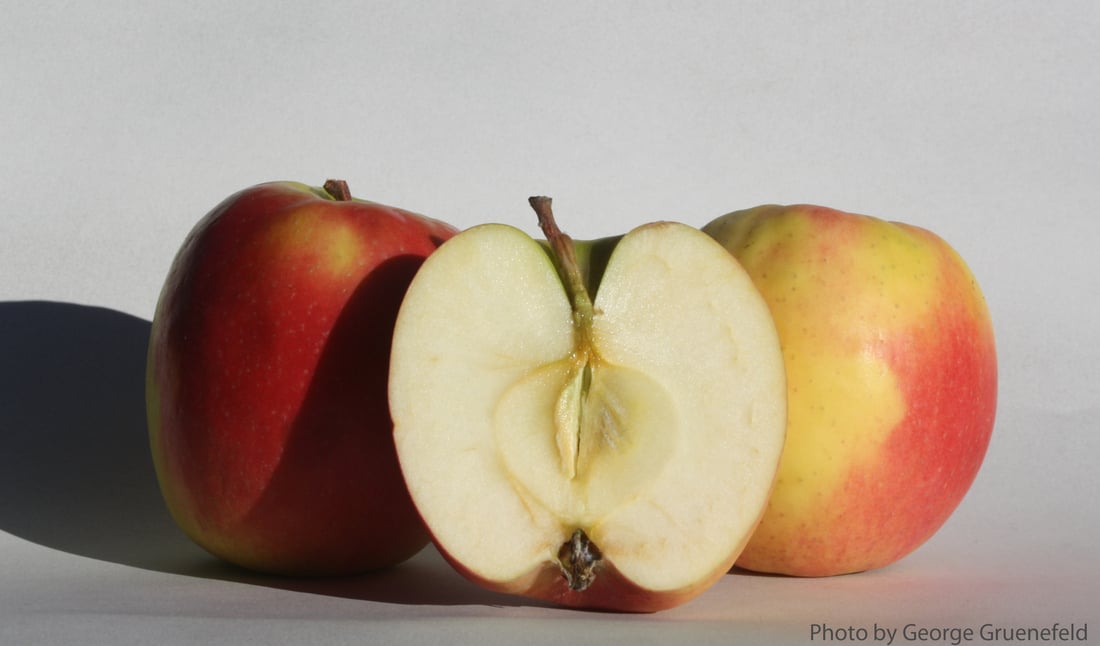Pomiferous
Welcome to the world's most extensive apples (pommes) database.
Information on over 7,000 apples is available here, all carefully researched and provided in a way that is easy to navigate.
Cripps Pink

type: Dessert, Sauce
synonyms: The Cripps Pink name is owned and licensed by the Department of Agriculture and Food, Western Australia. The Cripps Pink is also marketed as Pink Kiss, Pink Rose, Swiss Lady. Pinkabelle is a Cripps Pink grafted onto dwarfing rootstock such as M9 or M27. The European market proposed 'Wild Pink" as a marketing name.
summary: This premium supermarket apple was intended for fresh eating. It originates from a cross of Lady Williams and Golden Delicious carried out in 1973.
identification: Large and round conic, higher than wide. The base skin colour is yellow over which are pink-orange blushes and broken stripes; little or no russeting. Tender and thin skin.
characteristics: Flesh is firm, dense and finely textured. High sugar with good acid balance. Juicy with what has been described as a Champagne fizz.
uses: This is one of the few apples which are tolerated by many people otherwise suffering from apple allergies.
origins: Created, along with the Cripps Red and Cripps Two in 1973 by John Cripps at the Stoneville Research Station for the Western Australian Department of Agriculture by crossing Golden Delicious and Lady Williams . It first fruited in 1979 and, along with the two with two other sets of seedlings -- the Cripps Red and the Cripps Two -- was released in 1986.
cultivation: Very vigorous and upright spreading tree. Requires a long growing period (150 frost-free days) and a fairly hot climate and hence are primarily provided commercially by Australia, South Africa and some parts of the U.S.A. where the Hardiness Zone drops no cooler than 5. Crops annually with moderate harvest which is typically . In spite of its need for a warm, long summer for ripening, it tolerates winter temperatures to 20 degrees below freezing for short periods.
mutations: PLBAR B1
cold storage: Will last four months in cold storage.
vulnerabilities: Susceptible in varying degrees to scab, blight and mildew.
harvest: Ready for harvest before the middle of the fourth period.
notes: The brand name Pink Lady is reserved for about 10% of the total crop which meets a standard of colour and acid balance outlined by APAL–Apple and Pear Australia Limited–which is the owner of the Pink Lady trademark. The remainder of the crop is sold as Cripps Pink.
pollination group: B
pollination peak: 6
ploidism: Diploid. Self fertile.
cold storage weeks: 16
brix: 13.5
harvest period: 4
hardiness: 6
Donate a cider?
©2016-2021 Pomiferous.com. All rights reserved